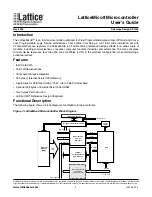
Wa t l o w S e r i e s 9 7
A p p e n d i x
■
A . 1 5
hysteresis — A change in the process variable required to re-energize the
control or alarm output. Sometimes called switching differential.
integral — Control action that automatically eliminates offset, or droop,
between set point and actual process temperature. See auto-reset.
integral control (I) — A form of temperature control. The I of PID. See
integral.
isolation — Electrical separation of sensor from high voltage circuitry. Allows
use of grounded or ungrounded sensing element.
Joint Industrial Standards (JIS) — A Japanese agency that establishes and
maintains standards for equipment and components. Also known as JISC
(Japanese Industrial Standards Committee), its function is similar to Germany’s
Deutsche Industrial Norm (DIN).
junction, cold — Connection point between thermocouple metals and the
electronic instrument. See junction, reference.
junction, reference — The junction in a thermocouple circuit held at a stable,
known temperature (cold junction). Standard reference temperature is 32°F
(0°C).
Modbus
™
— A digital communications protocol owned by AEG Schneider
Automation for industrial computer networks.
Modbus
™
RTU — Remote Terminal Unit, an individual Modbus
™
-capable device
on a network.
NEMA 4X — A NEMA specification for determining resistance to moisture
infiltration. This rating certifies the controller as washable and corrosion
resistant.
on/off controller — A temperature controller that operates in either full on or
full off modes.
open loop — A control system with no sensory feedback.
output — Control signal action in response to the difference between set point
and process variable.
overshoot — The amount by which a process variable exceeds the set point
before it stabilizes.
P control — Proportioning control.
PD control — Proportioning control with derivative (rate) action.
PDR control — Proportional derivative control with manual reset, used in fast
responding systems where the reset causes instabilities. With PDR control, an
operator can enter a manual reset value that eliminates droop in the system.
PI control — Proportioning control with integral (auto-reset) action.
PID — Proportional, integral, derivative. A control mode with three functions:
proportional action dampens the system response, integral corrects for droop,
and derivative prevents overshoot and undershoot.
proportional — Output effort proportional to the error from set point. For
example, if the proportional band is 20° and the process is 10° below set point,
the heat proportioned effort is 50 percent. The lower the PB value, the higher
the gain.












































